Grow Passion Fruit Backyard: Imagine stepping into your backyard and being greeted by the intoxicating aroma of tropical blooms, followed by the sweet-tart taste of freshly picked passion fruit. Sounds like a dream, right? Well, it doesn’t have to be! You can transform your outdoor space into a passion fruit paradise with a few simple DIY tricks and hacks.
Passion fruit, with its vibrant purple or yellow skin and juicy, seed-filled pulp, has a rich history rooted in South America. Indigenous cultures have long revered it for its delicious flavor and medicinal properties. Today, its popularity has spread worldwide, gracing everything from desserts to cocktails. But did you know you can easily grow passion fruit backyard, even if you don’t have a sprawling estate?
Many people shy away from the idea of growing their own passion fruit, thinking it’s too difficult or requires specialized knowledge. But that’s simply not true! With the right guidance and a little bit of elbow grease, you can enjoy a bountiful harvest of this exotic fruit right in your own backyard. This DIY guide will equip you with the essential tips and tricks to successfully cultivate passion fruit, saving you money at the grocery store and providing you with a rewarding gardening experience. Plus, imagine the bragging rights when you serve up homemade passion fruit desserts made with fruit you grew yourself! Let’s get started!
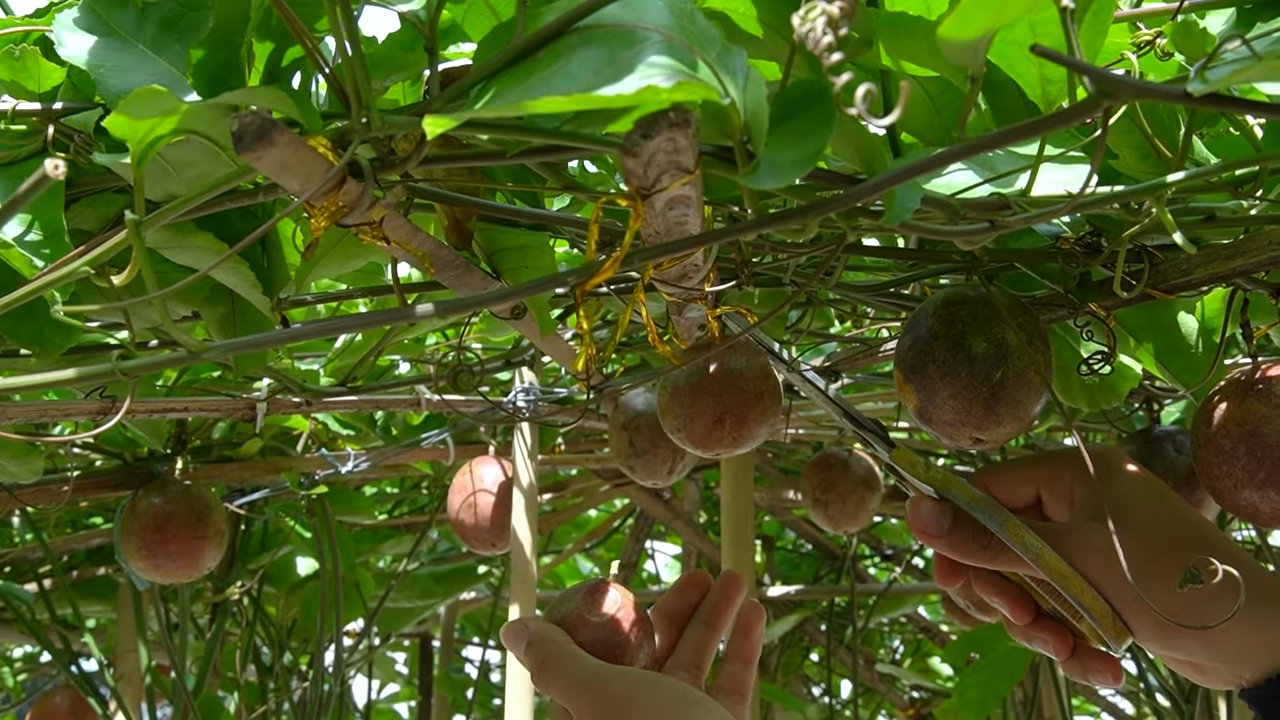
Growing Passion Fruit in Your Own Garden: A DIY Guide
Hello garden friends! Have you ever wondered how you can grow that exotic, sweet-and-sour delicacy, the passion fruit, in your own garden? I’ve tried it, and it’s easier than you might think! With a little patience and the right steps, you too can soon be harvesting your own passion fruits. Here is my detailed DIY guide to help you:
What you need for growing passion fruit
Before we get started, here is a list of the things you’ll need:
- Passion fruit seeds or a young passion fruit plant: Seeds are cheaper, but it takes longer for them to bear fruit. A young plant is quicker but more expensive. I recommend starting with a plant if you’re impatient.
- A sunny location: Passion fruits love the sun! At least 6 hours of direct sunlight per day are ideal.
- Well-draining soil: Waterlogging is the enemy of the passion fruit.
- A support structure: Passion fruits are climbing plants and need something to hold on to. A trellis, a fence, or a pergola is perfect.
- Pruning shears: For trimming the plant.
- Garden gloves: To protect your hands.
- Compost or fertilizer: To enrich the soil and feed the plant.
- Watering can or garden hose: For watering the plant.
- Patience: Passion fruits take time to grow and bear fruit.
Proper Preparation is Everything
Before you plant your passion fruit, it’s important to prepare the location and the soil.
- Choose the right location: Pick a sunny spot in your garden that receives at least 6 hours of direct sunlight per day. Make sure the location is protected from strong winds.
- Prepare the soil: Passion fruits prefer well-draining soil. If your soil is heavy and clay-like, you should improve it with compost or sand. Dig a hole that is twice as wide and deep as the root ball of your plant.
- Install a support structure: Passion fruits are climbing plants and need something to hold on to. A trellis, a fence, or a pergola is ideal. Make sure the support is stable and can bear the weight of the plant.
Planting Passion Fruit: Step-by-Step Guide
Now let’s get down to it! Here is how you plant your passion fruit correctly:
- Remove the plant from the pot: Gently loosen the plant from the pot. If the roots are heavily pot-bound, you can carefully tease them apart a bit.
- Plant the plant: Place the plant in the prepared hole. The top of the root ball should be level with the surrounding soil.
- Fill the hole: Fill the hole with soil and press it down lightly.
- Water the plant: Water the plant thoroughly to moisten the soil.
- Mulch the plant: Apply a layer of mulch around the plant to retain moisture and suppress weeds.
Caring for Your Passion Fruit: Tips and Tricks
Proper care is crucial for a bountiful harvest. Here are some tips to help you:
- Watering: Water your passion fruit regularly, especially during dry periods. The soil should be moist, but not wet.
- Fertilizing: Fertilize your passion fruit regularly with a balanced fertilizer. I like to use organic fertilizer to feed the plant naturally.
- Pruning: Prune your passion fruit regularly to keep it in shape and encourage fruit production. Remove dead or damaged shoots.
- Protection from frost: Passion fruits are sensitive to frost. If you live in a region with cold winters, you should cover your plant in winter or bring it indoors.
Pruning: How to Do It Right
Pruning is an important step to keep your passion fruit healthy and productive. Here are some tips:
- When to prune: The best time to prune is after the harvest season.
- What to prune: Remove dead, damaged, or diseased shoots. Shorten long shoots to keep the plant in shape.
- How to prune: Use sharp pruning shears to make clean cuts. Cut the shoots just above a leaf node.
Pests and Diseases: What to Do?
Like all plants, passion fruits can be affected by pests and diseases. Here are some common problems and how you can combat them:
- Aphids: Aphids are small, sucking insects that settle on the leaves and shoots of the plant. You can spray them off with a strong jet of water or treat them with an insecticide.
- Spider mites: Spider mites are tiny pests that settle on the leaves of the plant and suck them dry. You can treat them with an insecticide or with neem oil.
- Fungal diseases: Fungal diseases can affect the leaves and fruits of the plant. You can treat them with a fungicide.
Harvest Time: When is the Passion Fruit Ripe?
Harvest time is the most exciting part! Here’s how you know when your passion fruits are ripe:
- Color: Ripe passion fruits have a deep, rich color. Depending on the variety, the color can range from yellow to orange to dark purple.
- Weight: Ripe passion fruits feel heavy for their size.
- Falling: Ripe passion fruits often fall from the vine on their own.
- Skin: The skin of ripe passion fruits can be slightly wrinkled. This is a sign that they are fully ripe.
Harvesting Passion Fruit: Here’s How
When your passion fruits are ripe, you can harvest them.
- Collect the fruits: Pick up the fruits that have fallen to the ground.
- Cut the fruits off: Cut the fruits that are still hanging on the vine with pruning shears.
- Store the fruits: Store the harvested fruits in a cool, dry place. They will keep for several days.
Using Passion Fruit: Delicious Ideas
Now that you’ve harvested your own passion fruits, you can use them in many ways. Here are some ideas:
As jam: Cook the pulp into a delicious passion fruit jam.
Eat it plain: Cut the fruit open and scoop out the pulp with a spoon.
In smoothies: Add the pulp to your smoothies to give them an exotic flavor.
In desserts: Use the pulp in desserts like cakes, pies, or ice cream.
In cocktails: Use the pulp in cocktails to give them a tropical touch.
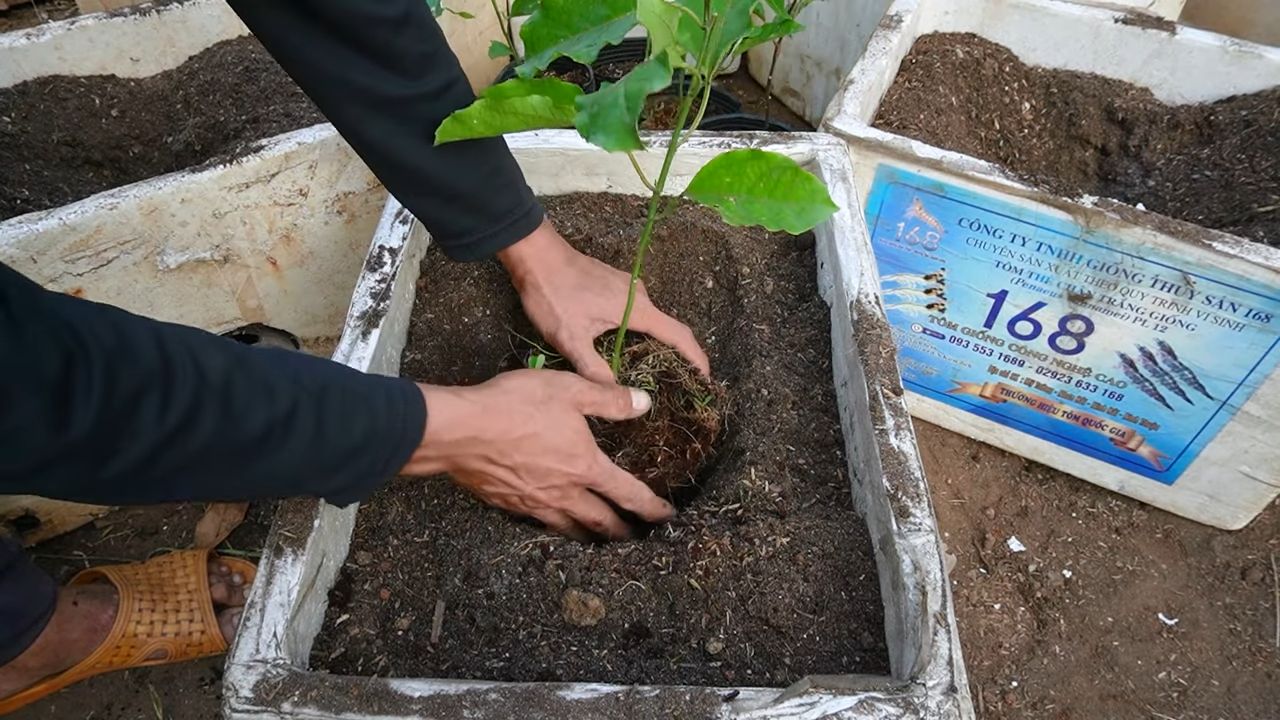
Conclusion
So, there you have it! Growing passion fruit in your backyard isn’t just a whimsical dream; it’s an achievable reality with a little know-how and dedication. We’ve walked you through the essentials, from selecting the right variety for your climate to nurturing your vine for optimal fruit production. But why should you embark on this fragrant, fruitful adventure?
Firstly, the taste. Forget the bland, mass-produced passion fruit you find in supermarkets. Homegrown passion fruit bursts with an unparalleled tropical tang, a symphony of sweet and tart that will elevate your desserts, drinks, and even savory dishes. Imagine the satisfaction of plucking a perfectly ripe fruit from your own vine, knowing that you nurtured it from a tiny seedling to a bountiful producer.
Secondly, the beauty. Passion fruit vines are stunning additions to any garden. Their intricate tendrils, lush green foliage, and exotic flowers create a visual spectacle that will transform your backyard into a tropical paradise. They can provide shade, privacy, and a touch of the exotic, all while yielding delicious fruit.
Thirdly, the sustainability. By growing your own passion fruit, you’re reducing your carbon footprint, supporting local biodiversity, and enjoying a truly organic treat. You’ll know exactly where your food comes from and how it was grown, giving you peace of mind and a deeper connection to nature.
But the benefits don’t stop there. Growing passion fruit can be a rewarding hobby, a chance to learn new skills, and a way to connect with your community. Share your harvest with neighbors, friends, and family, and spread the joy of homegrown goodness.
Now, let’s talk variations. While we’ve focused on the basics, there’s plenty of room for experimentation. Try different training methods, such as growing your vine on an arbor, trellis, or fence. Experiment with different fertilizers and soil amendments to find what works best for your specific conditions. And don’t be afraid to get creative with your recipes. Passion fruit pairs beautifully with everything from yogurt and granola to seafood and salads.
Consider these exciting variations to enhance your passion fruit growing experience:
* Vertical Gardening: If you’re short on space, train your passion fruit vine to grow vertically on a wall or fence. This maximizes your growing area and creates a stunning green backdrop.
* Container Gardening: For those with limited outdoor space, passion fruit can be successfully grown in large containers. Just ensure the container has adequate drainage and provide a sturdy trellis for the vine to climb.
* Grafting: For faster fruit production and disease resistance, consider grafting your passion fruit vine onto a hardier rootstock. This technique can significantly improve your chances of success, especially in challenging climates.
* Companion Planting: Plant companion plants like basil, marigolds, and nasturtiums around your passion fruit vine to attract beneficial insects and deter pests. These natural allies can help keep your vine healthy and productive.
Ultimately, the best way to learn is by doing. So, grab a passion fruit seedling, prepare your soil, and get ready to embark on a delicious adventure. We encourage you to try this DIY trick and experience the joy of growing your own passion fruit. Don’t be afraid to experiment, make mistakes, and learn from your experiences.
And most importantly, share your journey with us! We’d love to hear about your successes, challenges, and favorite passion fruit recipes. Post photos of your vines, share your tips and tricks, and connect with other passion fruit enthusiasts. Together, we can create a community of passionate growers and spread the love of this amazing fruit. So, what are you waiting for? Start growing passion fruit in your backyard today!
Frequently Asked Questions (FAQ)
What is the best climate for growing passion fruit?
Passion fruit thrives in warm, subtropical to tropical climates. Ideally, temperatures should range between 65°F (18°C) and 85°F (29°C). While some varieties can tolerate brief periods of frost, prolonged exposure to cold temperatures can damage or kill the vine. If you live in a cooler climate, consider growing passion fruit in a container that can be moved indoors during the winter months. Selecting a cold-hardy variety is also crucial for success in marginal climates. Look for varieties specifically bred for cooler temperatures.
How long does it take for a passion fruit vine to produce fruit?
Generally, passion fruit vines start producing fruit within 12 to 18 months of planting. However, this can vary depending on the variety, growing conditions, and overall health of the vine. Providing optimal sunlight, well-drained soil, and regular fertilization can help accelerate fruit production. Grafted plants often produce fruit sooner than those grown from seed. Be patient and consistent with your care, and you’ll be rewarded with a bountiful harvest.
What kind of soil is best for passion fruit?
Passion fruit prefers well-drained soil that is rich in organic matter. A slightly acidic to neutral pH (around 6.0 to 7.0) is ideal. Amend heavy clay soils with compost, peat moss, or other organic materials to improve drainage and aeration. Sandy soils may need additional organic matter to retain moisture and nutrients. Regular soil testing can help you determine the specific nutrient needs of your vine and adjust your fertilization accordingly.
How often should I water my passion fruit vine?
Passion fruit vines need consistent moisture, especially during the growing season. Water deeply and regularly, ensuring that the soil remains moist but not waterlogged. Avoid overwatering, as this can lead to root rot. During the dormant season, reduce watering frequency. Monitor the soil moisture levels regularly and adjust your watering schedule based on the weather conditions and the needs of your vine.
What kind of fertilizer should I use for passion fruit?
Passion fruit vines benefit from regular fertilization with a balanced fertilizer that is rich in nitrogen, phosphorus, and potassium. A fertilizer with a ratio of 10-5-20 is often recommended. Apply fertilizer every 4-6 weeks during the growing season. Avoid over-fertilizing, as this can damage the vine. Organic fertilizers, such as compost tea and fish emulsion, can also be used to provide essential nutrients.
How do I prune my passion fruit vine?
Pruning is essential for maintaining the health and productivity of your passion fruit vine. Prune regularly to remove dead, damaged, or diseased growth. Also, prune to control the size and shape of the vine and to encourage fruit production. The best time to prune is after the main harvest season. Remove any tangled or overcrowded growth to improve air circulation and sunlight penetration.
What are some common pests and diseases that affect passion fruit?
Passion fruit vines can be susceptible to various pests and diseases, including aphids, spider mites, scale insects, and fungal diseases like fusarium wilt and anthracnose. Regularly inspect your vine for signs of infestation or disease. Treat any problems promptly with appropriate organic or chemical controls. Good cultural practices, such as proper watering, fertilization, and pruning, can help prevent many pest and disease problems.
How do I harvest passion fruit?
Passion fruit is ready to harvest when the fruit changes color from green to purple or yellow, depending on the variety. The fruit should also be slightly wrinkled and have a fragrant aroma. Gently twist the fruit from the vine, or allow it to drop naturally. Store harvested passion fruit in a cool, dry place.
Can I grow passion fruit from seed?
Yes, you can grow passion fruit from seed, but it may take longer to produce fruit compared to grafted plants. Soak the seeds in warm water for 24 hours before planting to improve germination. Plant the seeds in a well-drained potting mix and keep them moist. Once the seedlings are large enough, transplant them into individual pots or directly into the garden. Be aware that seedlings may not be true to type, meaning that the fruit may not be exactly the same as the parent plant.
Is passion fruit self-pollinating?
While some passion fruit varieties are self-pollinating, others require cross-pollination to produce fruit. If you are growing a variety that requires cross-pollination, you will need to plant two different varieties nearby to ensure fruit set. Bees and other pollinators can help with cross-pollination. You can also hand-pollinate the flowers by transferring pollen from one flower to another using a small brush.

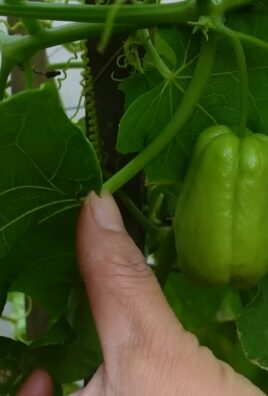
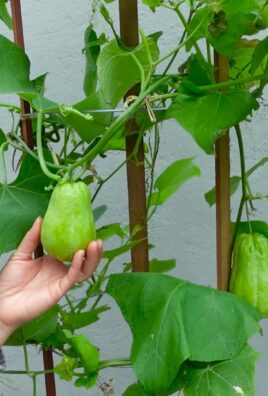
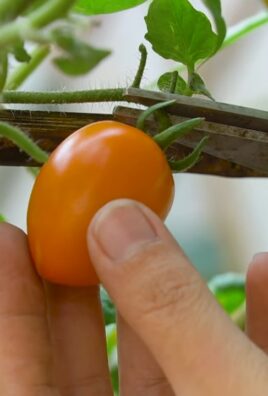
Leave a Comment